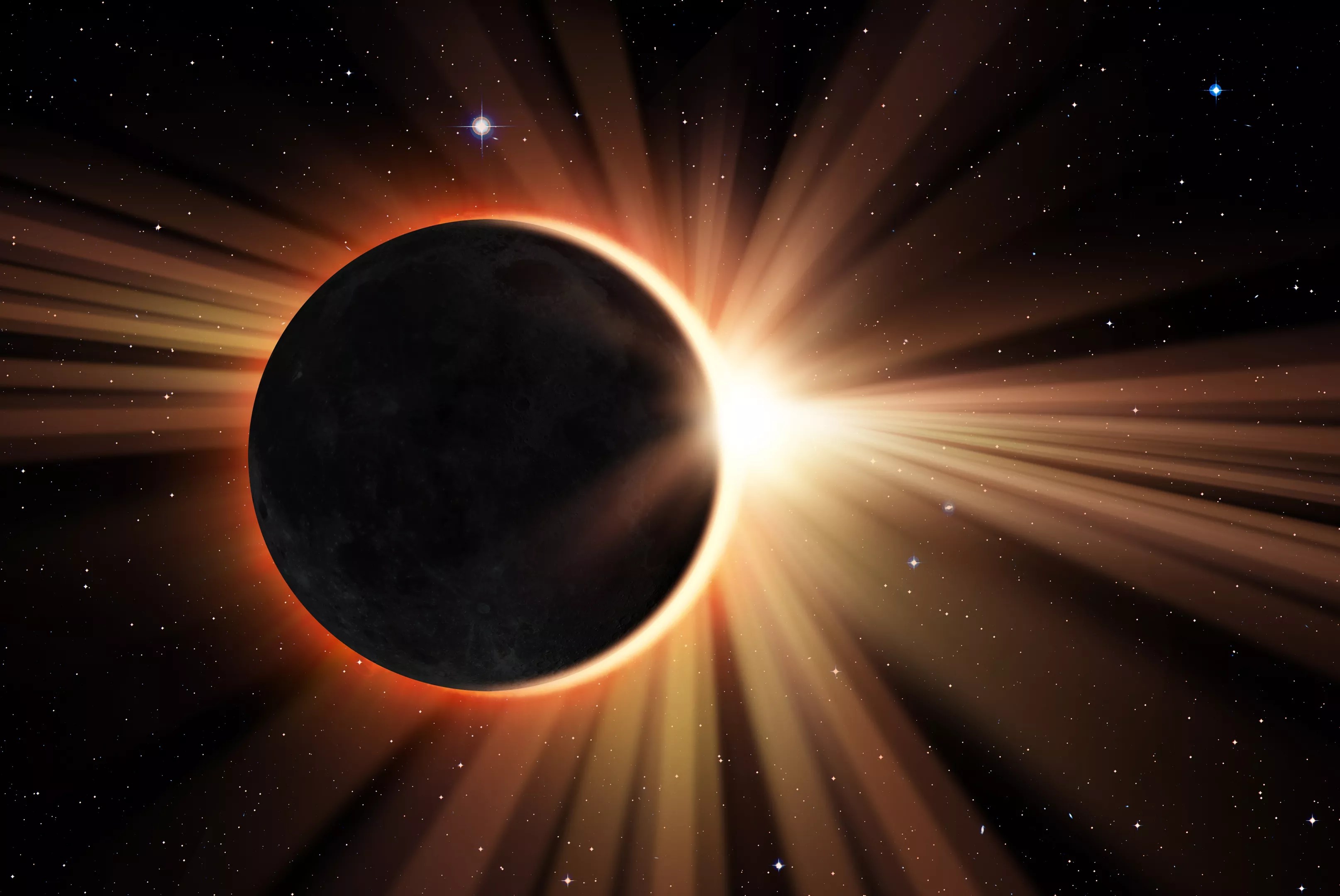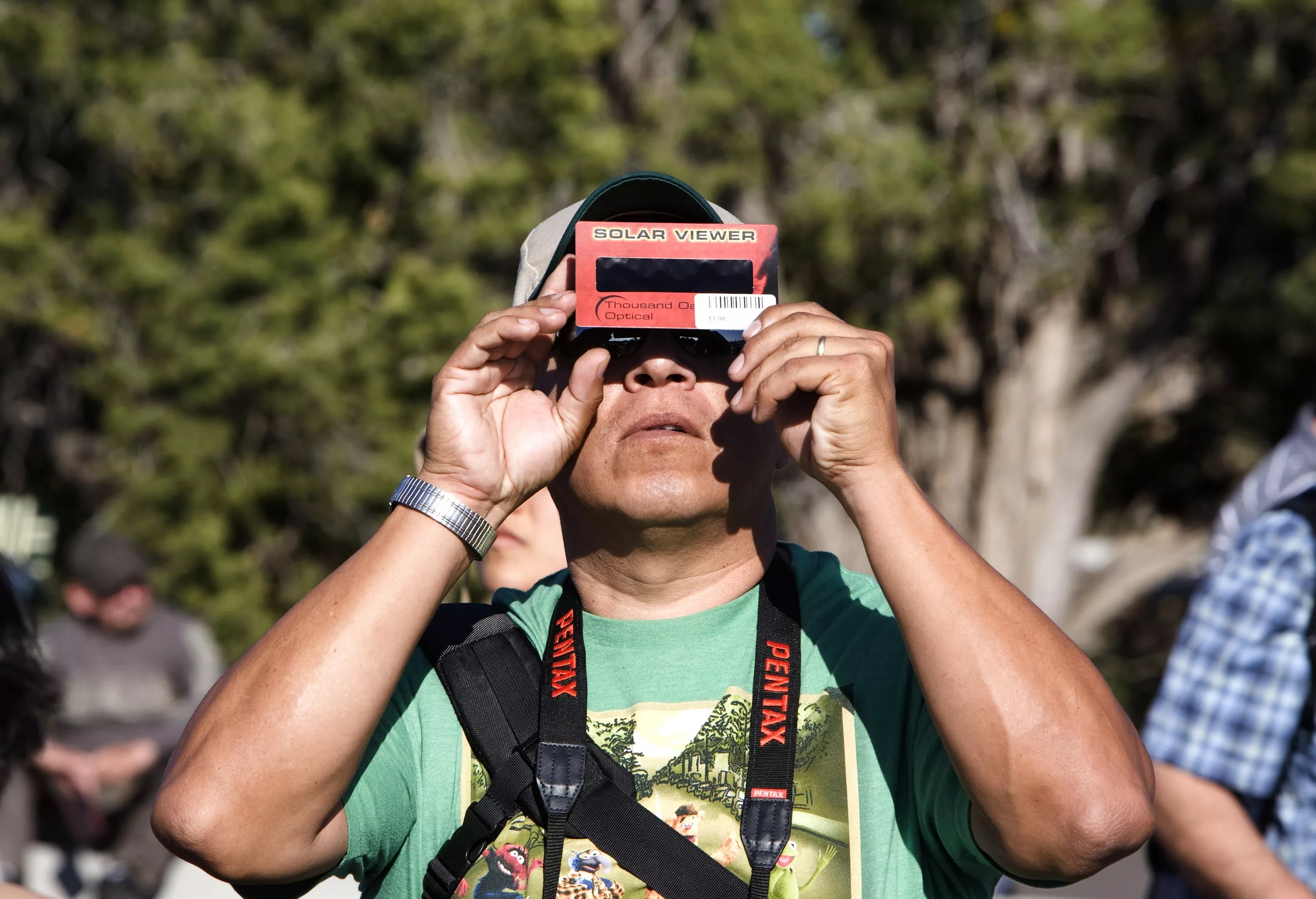
muratart/Shutterstock.com

Audio By Carbonatix
One of the most stunning celestial events that mankind will ever witness is about to unfold in the skies over America.
And, yes, Arizonans will also get a chance to see it, too. Mostly.
As we’re sure you’ve heard, a total solar eclipse will take place throughout a large portion of the United States on Monday, August 21. It’s been dubbed the Great American Eclipse and will allow the residents of more than a dozen states to experience the grand phenomenon of the moon passing between the earth and the sun.
This year, make your gift count –
Invest in local news that matters.
Our work is funded by readers like you who make voluntary gifts because they value our work and want to see it continue. Make a contribution today to help us reach our $30,000 goal!
According to astronomers, the eclipse will follow a narrow, curving path stretching from the Pacific Northwest all the way to the southeastern U.S. And those lucky enough to live in any of the 13 or so states along the way will get the show of a lifetime.
As for everyone else in America, the amount of the eclipse you’ll see will depend exactly on how far you are from said path of totality.
Arizonans, for instance, we will see a partial eclipse, where approximately 64 to 82 percent of the sun will be obscured by the moon starting in the mid-morning and going until just after noon. (Here in the Phoenix area, it’ll be around 70 percent.) Essentially, you’ll see the sun become a crescent-like shape at the height of the phenomena.
In other words, we’re going to get a big bite of it, but not the whole enchilada.
Don’t get us wrong, it’s still going to be a grand and awe-inspiring occasion that’s worth heading outside to see, if only for a few minutes.
You’ll want to do it properly, however, since staring at the sun during any eclipse with the naked eye can still result in major damage to your peepers.
To help prevent that, as well as prepare you for the Great American Eclipse, New Times has put together a comprehensive guide to what to expect on Monday, August 21. It’s loaded with details about what you’ll see, the best places to catch the eclipse, and how to view things safely without blinding yourself.
When It’s Happening: According to astronomers, the solar eclipse will start at approximately 9:12 a.m. Arizona time on Monday, August 21, and last until noon. It will reach its peak (or maximum coverage of the sun by the moon) at approximately 10:32 a.m.
How Much Will We See? As previously mentioned, we’ll only experience a partial eclipse of the sun, at best. And like most of the country, the amount of the eclipse you’ll see here in Arizona will depend on how far you are from its path of totality.
Put simply, the more will northeasterly you go, the more you’ll see. Down in Yuma, for instance, the eclipse will cover 66 percent of the sun. Meanwhile, in places like Kayenta, Monument Valley, or the Four Corners area in the northeastern part of the state, the eclipse will reach 82 percent totality.
Here in the Valley, however, we will see an eclipse covering just over 70 percent of the sun. It obviously won’t be as grand as witnessing the full effect of the phenomenon, but it will still be noticeable. Speaking of which …
What to Expect: The sun’s brightness will dim to almost dusk-like levels. So much so that it might feel a little jarring (albeit briefly) to your internal clock, considering it will be happening in the mid-morning. Shadows will also become more pronounced and you also may feel an overwhelming sense of awe and wonder.
And if you’re viewing the eclipse with proper protection here in the Valley, you’ll see the sun essentially become a crescent-like shape.
Despite what you may have read online, however, the lizard people probably won’t suddenly emerge from their hiding places for a look-see. Nor will there be any other sort of unearthly or supernatural events occurring during the eclipse. That’s fake news. So don’t expect dogs and cats to start living together, or any mass hysteria, for that matter.

Checking out the solar eclipse in 2012 at the Grand Canyon.
What’ll Happen if You Look Directly at the Eclipse: If you’re doing it without eye protection or a special viewer, you’ll damage your eyes. (Duh.) So, um, don’t do that. Seriously. Instead, be sure to equip yourself in the following ways …
Viewing the Eclipse Safely: Ordinary sunglasses won’t cut it, no matter how much you paid for ‘em. Nor should you try looking through a CD-R (remember those?) since neither option offers a sufficient amount of protection for your eyes.
Basically, you’ll need to use eyewear or a viewing device with lenses that are dark enough to comply with the ISO 12312-2 standards mandated by the American Astronomical Society to safely stare at the sun.
Welders’ goggles with a safety rating of 14 or higher are acceptable if you’ve got some handy. (If not, you can pick up a pair for $8 to $12 at local hardware or home supply stores.) Big box retailers like Wal-Mart, Home Depot, Fry’s Electronics, Toys R Us, and Lowe’s are also selling disposable eyewear that’s been certified as ISO 12312 compatible for $5 or less.
Various public libraries throughout the Valley are also offering eclipse glasses and education kits to residents, free of charge. (Details and locations can be found here.) And if you’re feeling crafty, here are some instructions on how to make a DIY pinhole viewer using a cardboard box.
Or you could always attend one of the many viewing parties happening throughout the Valley or around Arizona.

A solar eclipse viewing party in 2012 at the Grand Canyon.
Eclipse-Watching Events in the Valley and Elsewhere: Monumental events such as a solar eclipse are experiences that are best shared. If you happen to agree, there are plenty of viewings that will take place around town on Monday.
Fittingly enough, the Arizona Science Center will host one such event from 9 a.m. to noon, and it will feature solar-filtered telescopes for viewing the eclipse in close-up fashion, as well as free glasses for the first 500 people in attendance. Games, prizes, hands-on activities, demonstrations, and discussions are also planned. The planetarium will also have presentations devoted to the sun and the solar system. Everything is included in the regular museum admission, which is $13-$18.
Over at Arizona State University’s main campus in Tempe, the School of Earth and Space Exploration will put on a pair of viewing events with specialized telescopes. One will happen on Hayden Lawn, while the other will be outside of Interdisciplinary Science and Technology Building #4. Both are free and go from 9 a.m. until noon. They’ll also have glasses for the first 2,000 people in attendance.
The eggheads over at Mesa Community College’s main Southern and Dobson campus, as well as its Red Mountain location, will also have their (protected) eyes looking skyward during the eclipse. Free glasses, DIY viewing devices, demonstrations, and planetarium shows are promised at both spots, and the Southern and Dobson campus will have telescopes.
And the libraries in Apache Junction, El Mirage, Goodyear, Surprise, Buckeye, Gilbert, and Anthem will all offer

Viewing a partial eclipse through a solar telescope at the Grand Canyon in 2012.
If you’d like to make viewing the eclipse a day-trip experience (and see a better version of the phenomenon), consider heading up north to a couple of otherworldly spots. Lowell Observatory in Flagstaff will have a viewing party kicking off at 8 a.m. with solar telescopes, free glasses, a live stream direct from Oregon, and educators and astronomers available for any questions you might have.
General admission is $15, while seniors, students, and military members are $14. Children ages 5 to 17 get in for $8, and those 5 and under get in free.
Meanwhile, the Meteor Crater outside of Winslow will have its own event with free eclipse glasses and viewing devices. Doors open at 7 a.m. Admission is $18 for adults, $16 for seniors, $9 for kids and teens ages 6-17, and free for those 5 and under.
Viewing the Total Eclipse Online: NASA will stream wall-to-wall coverage of every single second of the solar eclipse as it travels across the U.S. on August 21 via a combination of satellites, airplanes, and cameras stationed on the ground. Best of all, there’s zero chance of damaging your peepers.
So When’s the Next Solar Eclipse? Sadly, another total solar eclipse won’t be viewable across most of the U.S. until 2045. And at the rate things are going, who knows if we’ll be around by then?
In other words, you won’t want to miss this one.